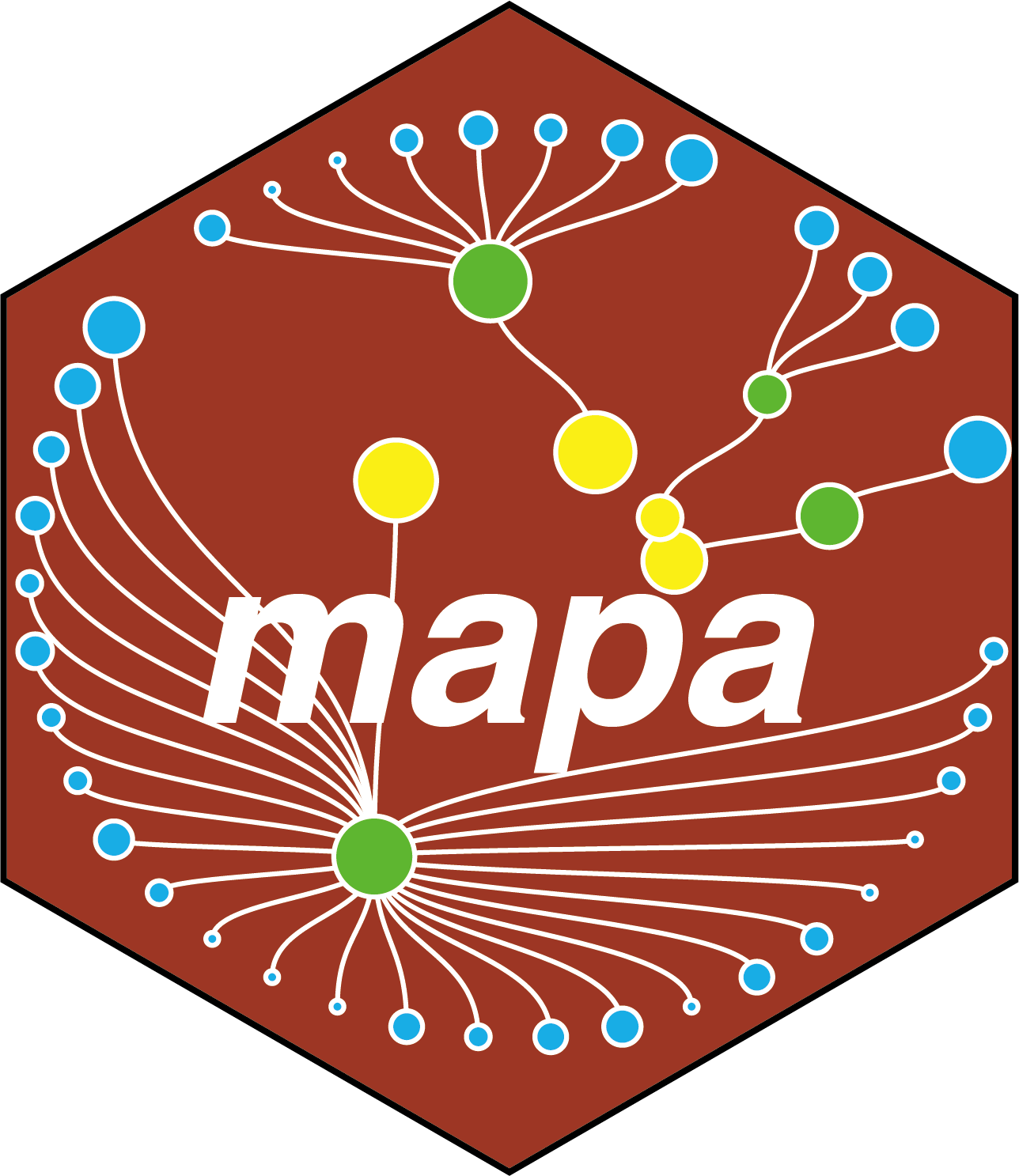functional_modules <-
get_functional_modules(
object = met_similarity_result,
sim.cutoff = 0.5,
cluster_method = "girvan newman"
)
# Get functional modules from traditional pathway similarity calculation results ...
# Calculating the similarity matrix...
# Identifying functional modules...
# Done6 Functional Module Identification
This chapter describes how to group related pathways into functional modules using the optimal clustering parameters determined in the previous chapter.
6.1 Overview
The get_functional_modules() function is a generic function that identifies functional modules from pathway similarity results. It automatically detects the type of input object and applies the appropriate clustering method:
- Traditional similarity objects: Uses Jaccard similarity between modules from different databases
- Biotext embedding objects: Uses pre-computed semantic similarity matrices
6.2 Basic Usage
The function automatically detects your input type and applies the appropriate clustering strategy:
functional_modules <-
get_functional_modules(
object = met_biotext_similarity,
sim.cutoff = 0.5,
cluster_method = "binary cut"
)
# Get functional modules from Biotext embedding results ...
# Identifying functional modules...
# Joining with `by = join_by(node)`
# Done6.3 Using Optimal Parameters
Apply the parameters identified in your clustering evaluation:
# Extract optimal parameters from your evaluation
best_params <- cluster_evaluation$best_combination
# Use modularity-optimized parameters
modularity_optimal <- best_params[best_params$metric == "modularity", ]
optimal_method <- modularity_optimal$method[1]
optimal_cutoff <- modularity_optimal$cutoff[1]
# Apply optimal parameters
functional_modules <-
get_functional_modules(
object = similarity_results,
sim.cutoff = optimal_cutoff,
cluster_method = optimal_method
)
# Alternatively, use silhouette-optimized parameters for better separation
silhouette_optimal <- best_params[best_params$metric == "silhouette", ]6.4 Similarity Cutoff Interpretation
The meaning of sim.cutoff depends on your clustering method:
Edge Filter: Only pathway pairs with similarity above this threshold are connected.
- Lower values (0.3-0.4): More permissive, denser networks, larger modules
- Higher values (0.6-0.8): More stringent, sparser networks, smaller modules
Dendrogram Cutting Height: Determines where to cut the clustering tree.
- Lower values (0.3-0.4): Cut lower in tree, more fine-grained modules
- Higher values (0.6-0.8): Cut higher in tree, fewer but larger modules
Key Difference in Cutoff Interpretation:
- In Girvan-Newman, higher cutoffs = smaller modules
- In Binary Cut/Hierarchical, higher cutoffs = larger modules
Always examine your results and adjust based on the biological interpretability of resulting modules.
6.5 Results Interpretation
After functional module identification, examine your results:
# View analysis summary
functional_modules
# --------------------
# Analysis method: enrich_pathway
# --------------------
# -----------Variable information------------
# 119 features/markers in total
# -----------Enrichment results and modules of genes------------
# -----------GO------------
# 1025 GO terms with p.adjust < 0.05
# 250 GO modules
# -----------KEGG------------
# 48 KEGG pathways with p.adjust < 0.05
# 29 KEGG modules
# -----------Reactome------------
# 48 Reactome pathways with p.adjust < 0.05
# 13 Reactome modules
# -----------Functional modules------------
# 158 Functional modules
# -----------LLM module interpretation------------
# No LLM module interpretation results
# --------------------
# Processing information
# 4 processings in total
# enrich_pathway ----------
# Package Function.used Time
# 1 mapa enrich_pathway() 2025-06-09 21:32:51
# merge_pathways ----------
# Package Function.used Time
# 1 mapa merge_pathways() 2025-06-09 21:34:00
# merge_modules ----------
# Package Function.used Time
# 1 mapa merge_modules() 2025-06-09 21:34:56
# Access functional modules
head(functional_modules@merged_module$functional_module_result)6.5.1 Key Result Columns
- module: Functional Module identifier (e.g., “Functional_module_127”)
- module_annotation: Representative pathway name (lowest p-value for ORA, highest |NES| for GSEA)
- Description: Names of all pathways in the module (separated by
;) - module_content: All pathway/term IDs grouped in this module
- Count: Number of genes/metabolites from input list in the module
- p_adjust: Best (lowest) adjusted p-value among pathways in the module
For GSEA results, additional columns include: - NES: Normalized Enrichment Score of the representative pathway - core_enrichment: Core enriched genes contributing to the module
6.6 Quality Assessment
Evaluate the quality of your functional modules:
# Check module size distribution
module_results <- functional_modules@merged_module$functional_module_result
module_sizes <- table(module_results$Count)
# Plot module size distribution
barplot(module_sizes,
main = "Distribution of Module Sizes",
xlab = "Number of Genes/Metabolites per Module",
ylab = "Number of Modules")
# Examine top modules by significance
top_modules <-
module_results %>%
arrange(p_adjust) %>%
head(10)
print(top_modules[, c("module_annotation", "Count", "p_adjust")])
# Check for singleton modules (modules with only one pathway)
singleton_count <- sum(sapply(strsplit(module_results$module_content, ";"), length) == 1)
cat("Number of singleton modules:", singleton_count, "\n")
cat("Percentage of singleton modules:", round(singleton_count/nrow(module_results)*100, 1), "%\n")6.7 Next Steps
Continue to LLM Interpretation to add AI-powered functional annotations to your modules, or proceed to Data Visualization to create informative plots of your functional modules.
